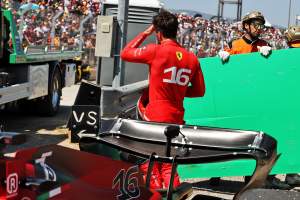Charles Leclerc blew it, no two ways about that. Unless it later comes to light that there was sudden wind gust at Turn 11 at just that moment, he just made a straightforward unforced error when leading the race. But was it a victory that it cost him or a second place? The answer to that is far less clear.
Whatever the answer, Max Verstappen made no such error, placed the Ferrari under enough pressure that there was a ring of blisters beginning to form on the shoulder of its right front, and then calmly reeled off the laps once the Ferrari had crashed to take his seventh victory of the season.
For a while – between laps 13 and 16 – it had looked like Verstappen’s onslaught on Leclerc’s control of this race was spent. It looked like, against expectations, Ferrari had solved its tricky tyre equation with a high-downforce set-up. The fear that all that extra Ferrari downforce over the skinny-winged Red Bull was going to saturate the tyres, induce excess thermal degradation and make Verstappen much faster than them in the race, was clearly misplaced.
But that didn’t mean this race was anything like decided when Red Bull brought Verstappen in early on lap 16 and Ferrari left Leclerc out. That had made it look like Red Bull was opting for the two-stop and Ferrari was going with the faster one-stop, in which case Leclerc should comfortably have won.
Except that wasn’t what was happening at all. Verstappen was still one-stopping. Red Bull had been highly surprised to see how long those front medium-compound tyres had withstood a 57°C track temperature for all those laps tight in the Ferrari’s turbulent air. So it reasoned it could afford the luxury of pitting early to get Max off those wilted mediums, gain track position through the undercut, and then retain it over a 37-lap second stint on the hards.
Leclerc would have lost track position to Verstappen whether he came in on lap 17 or stayed out longer to give a greater grip advantage in the second stint. So Ferrari didn’t respond to Verstappen’s stop. Leclerc stayed out and was set to run for another five or six laps. He’d have rejoined behind but with a significant tyre advantage and plenty of laps left.
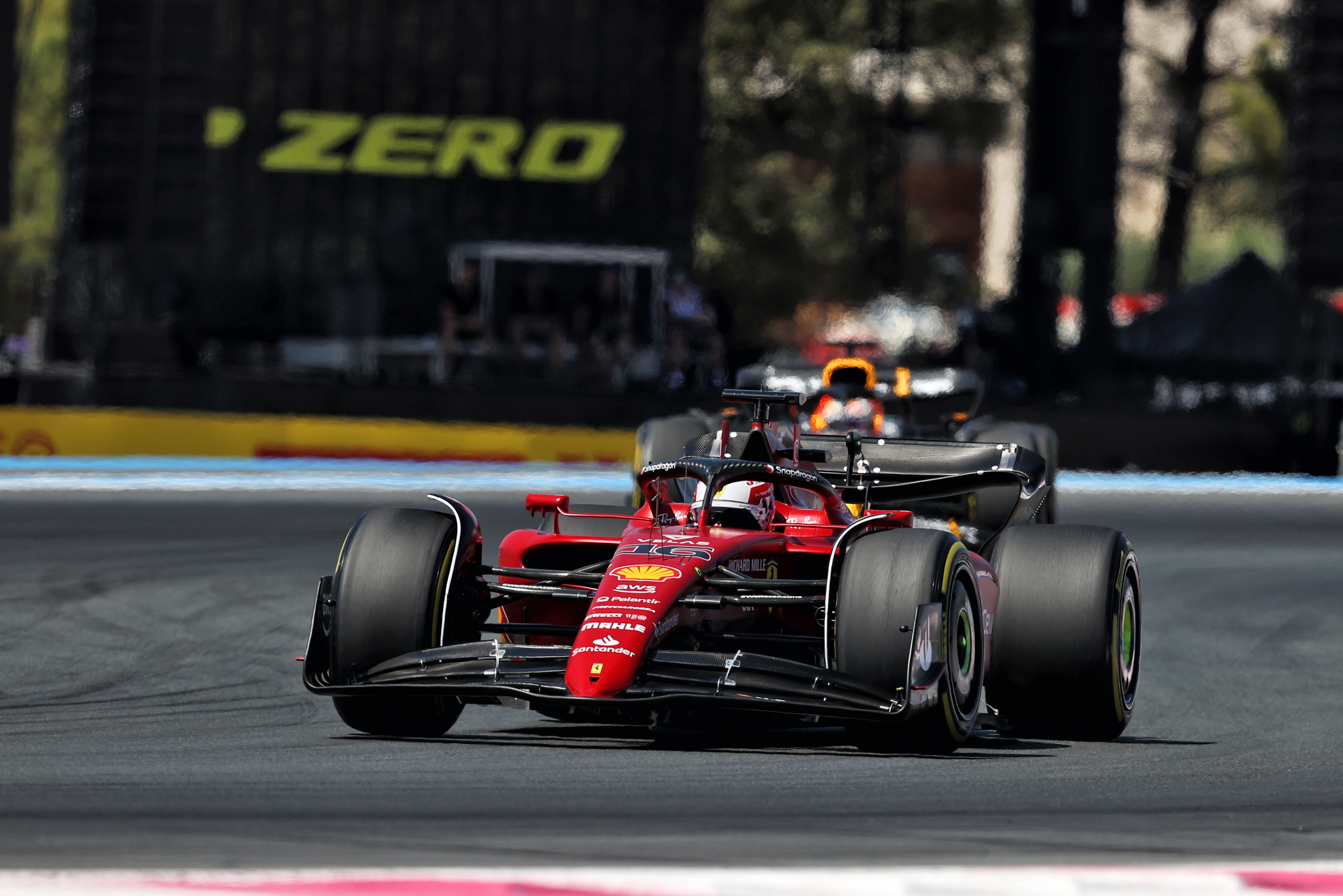
It was all set to be another classic Verstappen/Leclerc fight. Verstappen, despite the low-winged Red Bull’s significant straightline speed advantage, had been unable to pass Leclerc on track even with the help of DRS, because the Ferrari was able to carry so much more speed through Turns 5/6 which precede the Mistral straight.
So Verstappen spent the first few laps pushing the Ferrari and hoping he could make it overwork its front tyres. Leclerc by contrast, feeling his tyres were standing up just fine, was pushing hard trying to make Verstappen use up his tyres.
Going into the race Red Bull was believing/hoping that its low-downforce set-up wouldn’t take so much from the tyres, that the greater potential speed of the Ferrari through the corners couldn’t be used without heat-degrading its tyre performance away. Ferrari was reckoning/hoping it had got that equation right, that its greater downforce would help it look after the tyres better.
As it turned out, the two mechanisms were extremely finely-poised and so, therefore, was the performance of the two cars. Pushing each other like that, they left everyone else far, far behind.
But just a couple of laps after Verstappen stopped, Leclerc got slightly off line into the long, fast parabola of Le Beausset. Blandly known as Turn 11, this amazing corner had been the root of the Ferrari’s performance advantage all weekend. The F1-75’s speed through there was astonishing, 15km/h faster than anything else, enough to allow both Leclerc and Carlos Sainz to be super-late into it, running out very wide to the painted edge and then with the grip to simply make a high-speed ‘V’ for the exit.
That also made the car a little vulnerable here, of course. Running out so wide at such high speed, if there would be an oversteer snap, it would be a big one. It was. As soon as the left-rear found the painted white line, the car was not coming back.
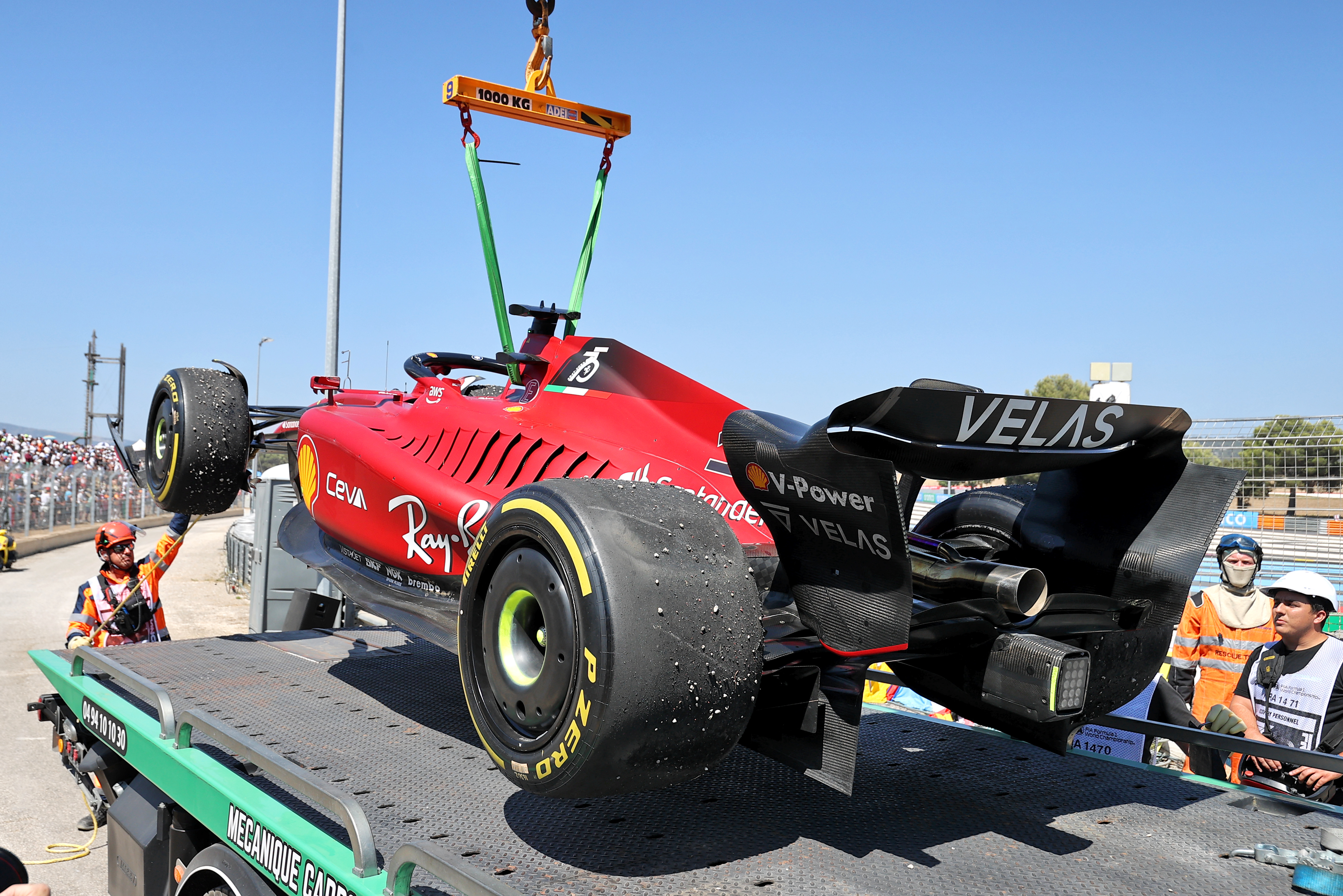
Like that, he was out. You will have heard the distraught scream into the radio. You may have heard him reference a jammed throttle – but that was simply a reference to the throttle no longer giving him any torque as he tried to reverse out, probably as a result of the impact.
He was taking the full blame for the accident.
With Sainz starting from the back of the grid for power unit penalties and Sergio Perez being a long way off Verstappen’s pace all weekend, Leclerc and Verstappen had left everyone else in a different contest.
Lewis Hamilton’s Mercedes led that pack start to finish, having got a great start to go straight past Perez. George Russell – once he’d got by the fast-starting Alpine of Fernando Alonso – later stole the final podium place from Perez, opportunely mugging him as the green flags came out to signal the end of a late VSC.
So Mercedes took its first double podium of the year, but neither that nor Hamilton keeping Verstappen within 10s really signified any competitive breakthrough there. That was just Verstappen controlling the pace. The Mercs were 0.9s off in qualifying, around 0.6s off in the race, still a very distant third-fastest.
Ironically Sainz, on the weekend he knew he’d be starting from the back of the grid, had his most competitive outing of the season to date. He was absolutely flying and his Q2 time was faster than Leclerc’s pole if you account for the slipstream. On the hard tyre, he’d made it up as far as the McLarens and Alpines, about half a minute off the lead, when everyone pitted under the Leclerc-induced safety car.
The safety car meant that once he’d dealt with Lando Norris and Alonso, he was within range of Russell and Perez and now on mediums to their hards. Although a delay on the right-front led to him being given an unsafe release into the path of Alex Albon’s Williams, incurring him a five-second penalty, his team mate’s accident had essentially bought him around 20s – and he launched into an impressive attack.
The only question was whether the mediums could do a 34-lap stint or whether he’d have to stop again.
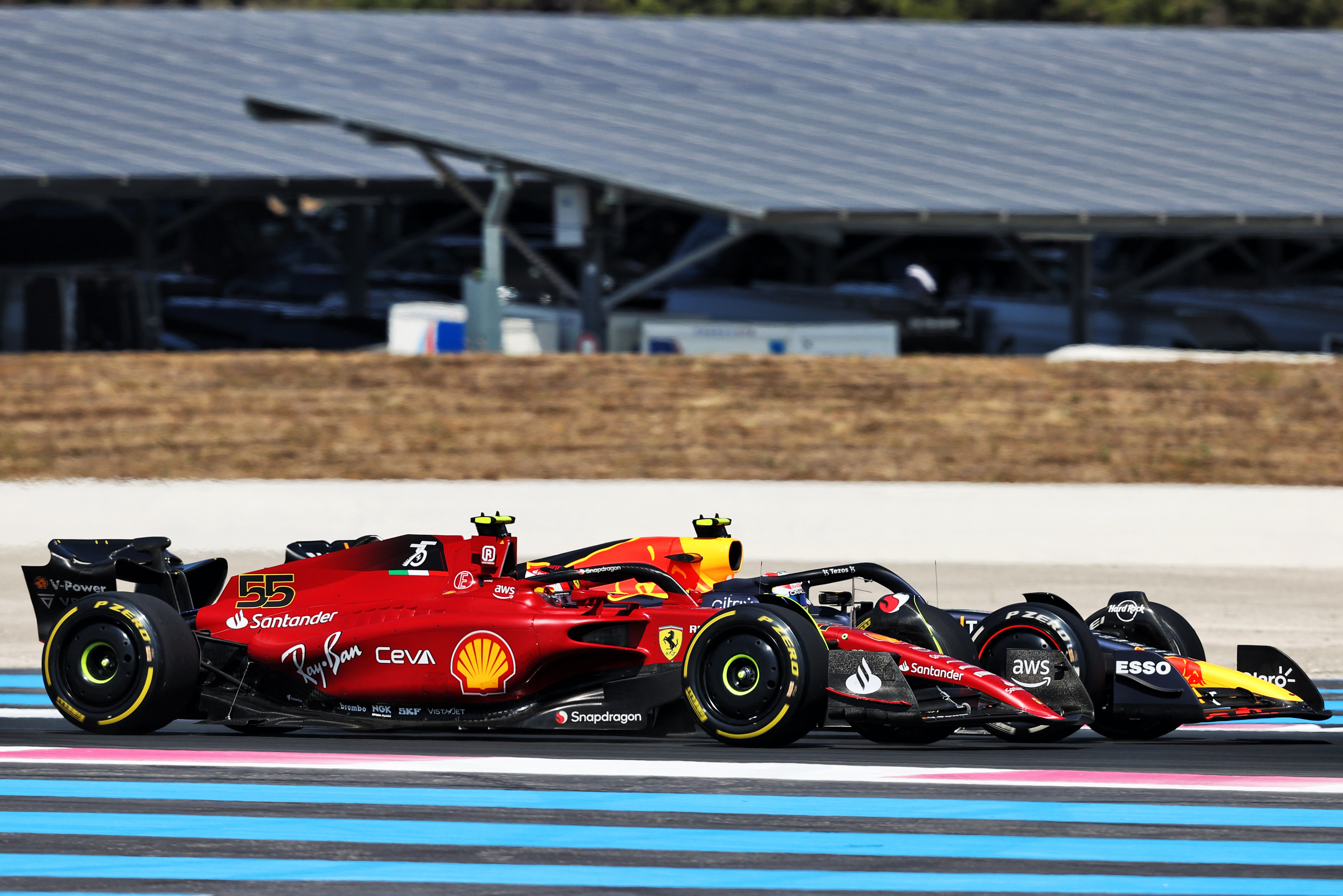
He passed Russell around the outside of Signes on lap 31 and although 10 laps later the same move on Perez didn’t quite work, he was all over the Red Bull and nailed a superb pass on it into the last corner – just as the team were telling him to box!
He’d effectively been forced into a strategic no man’s land by the long stint on the mediums. If the mediums were not going to last he needed to have pitted around lap 35 to give himself enough time to make up the horrendous pitstop loss of 28s plus the 5s penalty. But having sailed way past that, he really needed now to stay out, in third place, trying to pull out more than the 5s penalty on Perez and Russell.
Ferrari judged he was going to run out of tyre in the remaining 12 laps and thereby be unable to pull out the required 5s on them. Indeed, they feared he may even have been vulnerable to Alonso. So they brought him in – with nowhere near enough laps left to reclaim the positions he’d worked so hard taking. It seemed a defeatist approach, but both he and especially the team were defending it afterwards, reasoning that it simply exchanged an official P5 (with penalty) for a P5 with a point for fastest lap.
Over at McLaren, Norris had qualified the updated MCL36 in between the two Mercs, the car as ever much better at getting heat into its tyres than most, but getting too much heat into them in the race, the opposite of the Mercs. So it had nowhere near Mercedes pace on race day, nor enough pace to overturn Alonso’s passing him at the start. He remained behind to the end.
Team-mate Daniel Ricciardo followed on for most of the race but as the tyres wilted so he was passed by Esteban Ocon in the other Alpine for eighth. The final point was fought over – with contact being made on the last corner of the last lap – by the Astons of Lance Stroll and Sebastian Vettel.
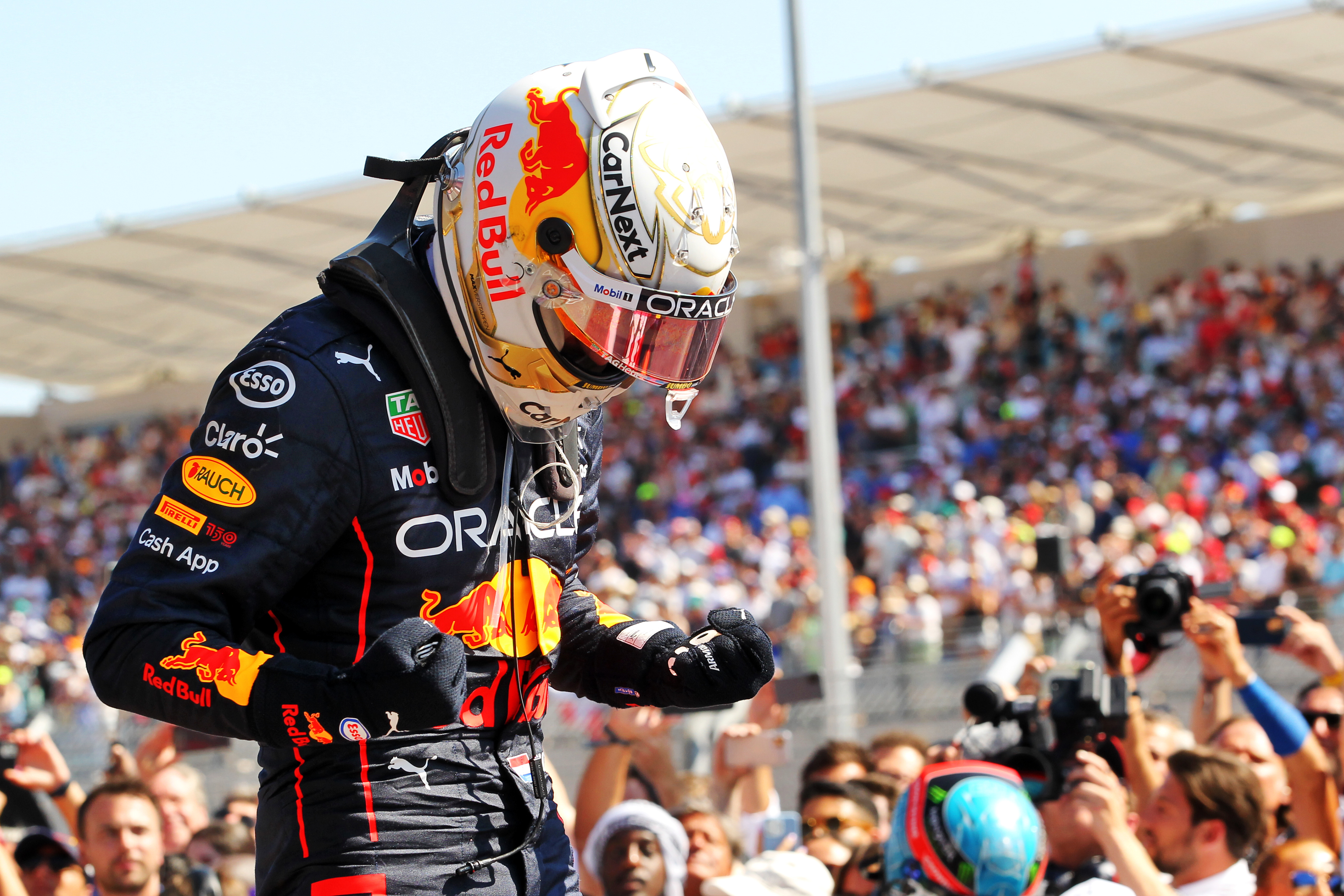
Verstappen has had harder-fought victories than this one, but he was faultless in delivering what was needed.
“I was putting pressure on Charles. But following around here with this heat, you know, the tyres are overheating a lot. So I could never really like go for a move, only once, into Turn 11. But yeah, we just tried to stay calm, tried to stay close.
“Of course, we pitted a bit earlier. And yeah, from there onwards, you never know how the race is going to go. But the car was quick today… From there onwards, I just did my race, looked after the tyres.
“Because of the pitlane being so long you couldn’t do another stop, so you had to stay out, but the tyres were wearing a lot. So it was all about just looking after the tyres to the end.”

